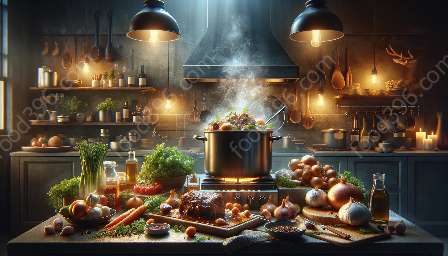Blanching noodles is a crucial step in the culinary world, especially when it comes to perfecting the texture, taste, and overall appeal of noodles. This food preparation technique involves briefly immersing the noodles in boiling water and then rapidly cooling them down in ice water. By doing so, the noodles are partially cooked, preserving their texture and color while also removing impurities.
This comprehensive guide will take you through the importance of blanching noodles, the benefits it offers, the step-by-step process, and tips for achieving perfectly blanched noodles for various dishes.
Importance of Blanching Noodles
Blanching noodles is a fundamental step that greatly impacts the final dish. It serves multiple purposes that contribute to the overall quality of the noodles and the dish they are used in:
- Texture: By blanching, the noodles maintain their desired texture, avoiding overcooking that could lead to mushy or overly soft noodles.
- Color Preservation: The blanching process preserves the vibrant colors of the noodles, ensuring they remain visually appealing in the final dish.
- Impurity Removal: Blanching helps remove impurities, excess starch, and surface debris from the noodles, resulting in a cleaner and more appetizing end product.
- Flexible Cooking: Partially cooked noodles allow for flexibility in the final cooking process, making it easier to achieve the perfect texture when used in various recipes.
Benefits of Blanching Noodles
Understanding the benefits of blanching noodles can elevate your culinary skills and enhance the overall dining experience. Here are some key advantages:
- Enhanced Texture: Blanching ensures that noodles have a chewy and springy texture, adding a delightful mouthfeel to the dish.
- Improved Presentation: The vibrant color and freshness of blanched noodles enhance the visual appeal of the dish, making it more enticing to diners.
- Reduced Cooking Time: With blanched noodles, the final cooking time is significantly reduced, allowing for quicker preparation of noodle-based dishes.
- Quality Retention: The blanching process helps retain the quality and integrity of the noodles, ensuring they hold up well in soups, stir-fries, and other preparations.
The Blanching Process
Blanching noodles involves a systematic approach to ensure optimal results. Follow these steps to master the art of blanching:
- Boil Water: Bring a pot of water to a rolling boil. It's essential to use a sufficient amount of water to allow the noodles to move freely and cook evenly.
- Season Water (Optional): Consider adding salt to the boiling water to enhance the flavor of the noodles. This step can infuse the noodles with a subtle seasoning as they blanch.
- Immerse Noodles: Add the noodles to the boiling water and gently stir to prevent sticking. Allow the noodles to cook for a brief period, typically 1-3 minutes, depending on the type and thickness of the noodles.
- Cool in Ice Water: Once the noodles have reached the desired level of doneness, quickly remove them from the boiling water and submerge them in a bowl of ice water. This rapid cooling halts the cooking process, preserving the texture and color of the noodles.
- Drain and Dry: After the noodles have cooled, drain them thoroughly to remove excess water. They are now ready to be incorporated into your preferred noodle-based dish.
Tips for Perfectly Blanched Noodles
To achieve perfectly blanched noodles, consider the following tips:
- Timing is Key: Monitor the noodles closely during the blanching process to ensure they reach the ideal level of doneness. Overcooking can result in undesirable texture, while undercooking may lead to a raw flavor.
- Ice Bath Efficiency: Use ample ice in the water bath to rapidly cool the noodles and prevent them from continuing to cook. This step is crucial for preserving the texture and color of the noodles.
- Proper Draining: Thoroughly drain the blanched noodles to remove excess water, preventing dilution of sauces or soups when added to the final dish.
- Customization: Adjust the blanching time based on the specific recipe and desired texture. Some dishes may call for softer or firmer noodles, so tailor the blanching process accordingly.
Mastering the art of blanching noodles opens up a world of culinary possibilities, allowing you to create exceptional noodle-based dishes with unparalleled texture, color, and overall appeal. Whether it's crafting a comforting bowl of noodle soup or preparing a stir-fry bursting with flavor, the blanching technique is a valuable skill that can elevate your culinary creations.

